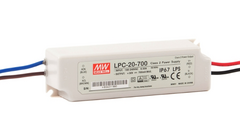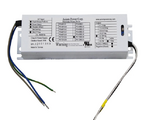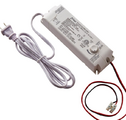What's the Difference Between Indoor and Outdoor LED Power Supplies?
Navigating Environmental Challenges
When selecting an LED power supply, understanding the differences between indoor and outdoor environments is crucial. Outdoor LED drivers must endure harsher conditions, including extreme temperatures, moisture, and potentially corrosive elements. To withstand these challenges, outdoor power supplies are typically built with higher IP (Ingress Protection) ratings, indicating their effectiveness against solid objects and liquids. An outdoor LED driver might have an IP rating of IP65 or higher, ensuring it is dust-tight and protected against water jets. In contrast, indoor drivers generally have lower IP ratings, such as IP20, sufficient for dry environments free from particulate interference.
Thermal Management Needs
Heat dissipation is a significant concern for LED power supplies due to the sensitivity of LEDs to high temperatures. Outdoor power supplies are often designed with better thermal management capabilities to handle fluctuating ambient temperatures. They might include features like heat sinks, more robust casings, or fan-assisted cooling. Indoor LED drivers, however, typically operate in more controlled temperature conditions, allowing for simpler and more compact designs without extensive heat dissipation mechanisms.
Durability and Construction Quality
Outdoor LED power supplies are constructed to be more robust. They are often encased in durable, weather-resistant materials like stainless steel or heavy-duty plastic that can resist fading, cracking, or warping under ultraviolet light or in fluctuating temperatures. Indoor power supplies are usually housed in lighter, less costly materials since they are not subject to the same degree of physical or environmental stresses.

Electrical and Wiring Considerations
Wiring and electrical connections also differ significantly between indoor and outdoor settings. Outdoor LED drivers are equipped with seals and protective measures to prevent water ingress and corrosion in connections, which could lead to electrical failures or short circuits. These measures ensure that outdoor units can handle wet conditions and are safe for use in landscapes, signage, or street lighting. Indoor units, meanwhile, require less rigorous protections and typically feature standard wiring setups suitable for residential or commercial building interiors.
Voltage and Current Specifications
Both indoor and outdoor LED drivers need to match the voltage and current requirements of their specific LED setups. However, outdoor LEDs, which often include high-output floodlights or streetlights, may require drivers capable of delivering higher currents and voltages consistently over longer cable runs without voltage drops. Indoor LED setups, including accent lighting and task lighting, might use lower currents and voltages, with power supplies designed for shorter distance and lower output requirements.
Where to Purchase Quality LED Power Supplies
Whether for indoor or outdoor use, selecting the right LED power supply is essential for ensuring optimal performance and longevity of your lighting system. It’s important to choose supplies that are specifically designed for the environment they will operate in to maximize efficiency and durability.
The Bottom Line
Choosing between an indoor and an outdoor LED power supply involves considering environmental resilience, thermal management, construction quality, and electrical specifications. Understanding these key differences helps ensure that the chosen power supply will perform reliably under its intended conditions, optimizing both safety and effectiveness in your LED lighting projects.





